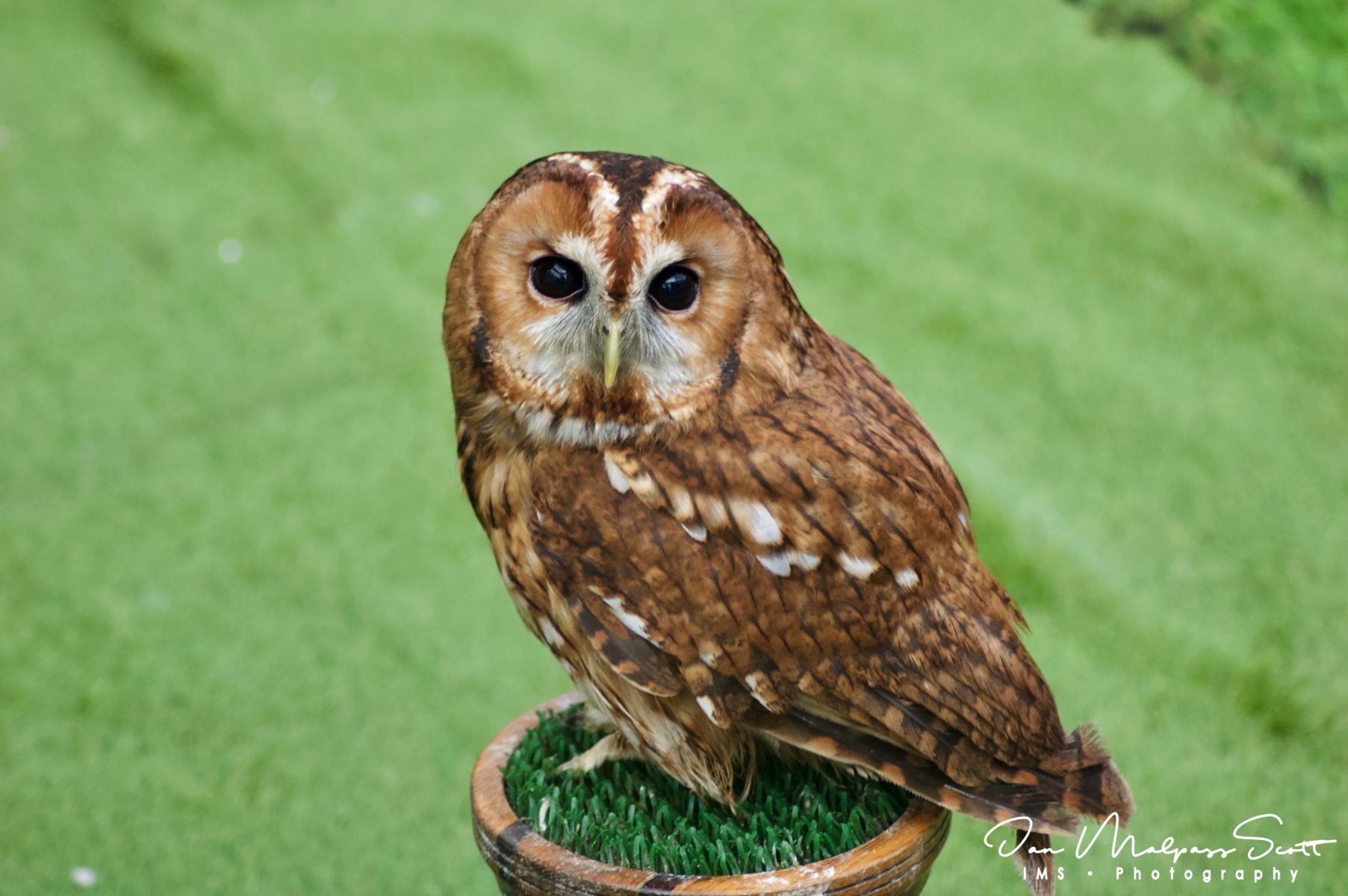A tawny owl at Tynemouth market.
The tawny owl (also called the brown owl) (Strix aluco) is commonly found in woodlands across much of Eurasia and North Africa, and has 11 recognized subspecies. It is a stocky, medium-sized owl, whose underparts are pale with dark streaks, and whose upper body may be either brown or grey. (In several subspecies, individuals may be of either color). The tawny owl typically makes its nest in a tree hole where it can protect its eggs and young against potential predators. It is non-migratory and highly territorial: as a result, when young birds grow up and leave the parental nest, if they cannot find a vacant territory to claim as their own, they will often starve.
The tawny owl is a nocturnal bird of prey. It is able to hunt successfully at night because of its vision and hearing adaptations and its ability to fly silently. It usually hunts by dropping suddenly from a perch and seizing its prey, which it swallows whole. It hunts mainly rodents, although in urbanized areas its diet includes a higher proportion of birds. It also sometimes catches smaller owls, and is itself sometimes hunted by the eagle owl and the northern goshawk.
Although many people assume that the tawny owl has exceptional night vision, its retina is no more sensitive than a human’s. Its directional hearing skill is more important to its hunting success: its ears are asymmetrically placed, which enables it to more precisely pinpoint the location from which a sound originates.
The tawny owl holds a place in human folklore: because it is active at night and has what many humans experience as a haunting call, people have traditionally associated it with bad omens and death. Many people think that all owl species make a hooting sound, but that is an overgeneralization based on the call of this particular species. In addition, the double hoot, which many people think is the tawny owl’s prototypical call, is actually a call and response between a male and a female.


